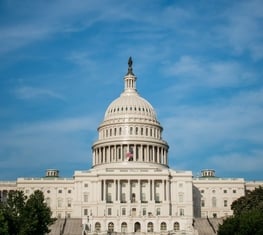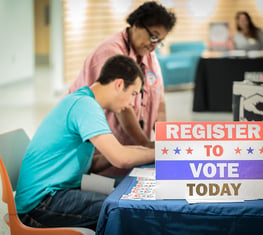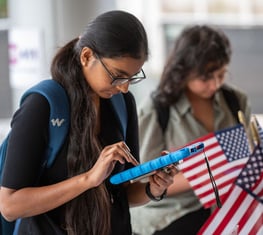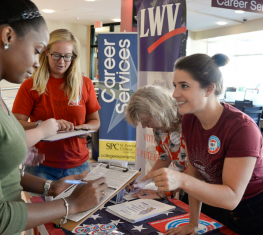A federal candidate in a two-year election cycle can receive in contributions:
- $5,000 from any single individual (indexed for inflation)
- $10,000 from any single political action committee (PAC)
Prior to 2010 and the Citizens United Supreme Court decision, corporations (and labor unions) were not permitted to spend their treasury funds to pay for ads to influence the outcome of federal candidate elections. Instead, they could solicit officers, managers and employees to voluntarily contribute a limited amount of their own money to a company- or union- sponsored PAC.
Additionally, prior to 2010, an individual or a PAC could make an unlimited “independent expenditure” in support of or in opposition to a federal candidate. If a PAC coordinated with the candidate on an expenditure, that “coordinated expenditure” was deemed a contribution and subject to the limits discussed above. In practice, only a few individuals and a relatively small number of PACs made “independent expenditures” over the last three decades because the expenditures were seen as costly and generally ineffective, and they often backfired.
In 2012, many of these outside groups are paying local television stations top dollar to run their ads. While the TV stations must by law offer qualified candidates a discounted rate (“lowest unit charge”) that the station gives their best customers, there are no limits on what the station can charge these outside groups. As the Vice President of Communications for the National Association of Broadcasters to The Hill, TV stations can charge higher rates for outside group ads – “whatever the market will bear”. TV stations, therefore, may find it difficult to reject such a well-paying ad since it is a high profit transaction.
Les Moonves, President of CBS told an entertainment law conference at UCLA in March, “Super PACs may be bad for America but they’re very good for CBS.”
- “Outside Groups” Spending Type A – PACs
Political Action Committees (PACs) solicit a limited amount of voluntary contributions from individuals. A PAC may be managed by a corporation, a union or by a group of individuals who agree on an issue or ideology. It can give as much as $10,000 in a two-year election cycle directly to a candidate, and may engage in “independent expenditures” such as funding TV ads
- “Outside Group” Spending Type B - Super PACs
In the Citizens United case, the Supreme Court lifted the ban on the use of corporate treasury funds for “independent expenditures” (though they still cannot be given directly to candidates.) Then, later in 2010, a federal appellate court, citing the recent Citizens United decision, found that if a PAC makes only ”independent expenditures,” the PAC could accept unlimited amounts of money and spend unlimited amounts on “independent expenditures.” The FEC subsequently made clear that a Super PAC could accept unlimited amounts not only from individuals, but also from corporations and unions.
The only restriction this particular kind of “independent expenditure only” PAC – now known as a “Super PAC” -- is that it cannot give directly to, or coordinate with, a candidate or party. Since this decision, the number of Super PACs has exploded to almost 1,000 registered so far, according to the Center for Responsive Politics. Some have been funded primarily by wealthy individuals, some by corporate funds and some (so far a much more limited number) by labor union funds. Super PACs have raised almost $320 million and spent more than $180 million as of early August 2012. (http://www.opensecrets.org/outsidespending/index.php).
Super PACs are required by law to file reports with the Federal Election Commission (FEC) that disclose their contributions and their expenditures.
The top five Super PAC spenders according to the Center for Responsive Politics to date are: Restore our Future (supporting Romney), Priorities USA Action (supporting Obama), Winning Our Future (supported former Republican candidate Newt Gingrich), American Crossroads (supporting Republican candidates), Club for Growth Action (supporting Republican candidates). http://www.opensecrets.org/outsidespending/summ.php?cycle=2012&chrt=V&type=S&ql3
- “Outside Group” Spending Type C – Nonprofits - 501(c) Groups
Also running campaigns TV ads that mention federal candidates in 2012 are a number of nonprofit 501(c) groups that do not register as political committees with the FEC and are not subject to political committee disclosure requirements.
The principle types of 501(c)’s active in the 2012 elections are:
- 501(c)(4) groups, or “social welfare” organizations. Examples of include: Crossroads GPS, run by Republican operate Karl Rove, and Priorities USA, run by Obama operative Bill Burton.
- 501(c)(5) groups, or labor unions. While a labor union may have a PAC whose funds come from union officers and members, a union may also use its treasury funds to run TV campaign ads. Examples of labor unions are the Service Employees International Union (SEIU) and the AFL-CIO.
- 501(c)(6) groups, or trade associations. The most prominent trade association running TV campaign ads is the U.S. Chamber of Commerce.
Under tax law, these nonprofit groups cannot have campaign activity as its primary activity. In practice, this has meant that these groups sometimes spend up to 49% of their funds on election ads. In fact, many of these groups active in the 2012 appear to have campaign activity as their principle – if not exclusive – activity, but are nevertheless claiming that campaign activity is not their group’s primary purpose. At least so far, the Internal Revenue Service (IRS) has taken no action to revoke their tax status. The Internal Revenue Service (IRS) recently announced it was reviewing the rules for these types of organizations, however.
Under federal tax law, 501(c)(4), (c)(5) or (c)(6) groups have no obligation to publicly disclose their donors. Furthermore, if these nonprofit groups do not have campaign activity as their primary purpose, they also are under no obligation to register as federal political committees (such as PACs and Super PACS) under federal campaign finance law. Thus almost none of these groups register with the FEC or disclose their campaign spending and their donors.
Since the Citizens United decision, the number of these groups running campaign ads has exploded since they can now spend unlimited amounts of their treasury funds on express campaign advertisements with no restriction on the use of funds from corporate sources. In particular, the 501(c)(4) social welfare organizations have risen to prominence, and are sometimes referred to as “dark money groups.” This is because the sources of the money that these groups spend to affect the outcome of federal elections is not disclosed, it is sometimes called “dark money.”
These groups both run their own TV ads and also contribute to Super PACs. However, even if they contribute to Super PACs subject to disclosure requirements, the Super PAC need only disclose the name of the nonprofit group itself, not the original sources of the nonprofit’s money. The sources of the funds of “dark money groups” thus remain unknown. These nonprofit groups are especially attractive to individuals and corporations who fear a public backlash due to their support for a particular candidate.
- “Outside Groups” Spending Type F – Political Party Committees
In addition to ads run by candidates, political parties run TV ads. There are a number of party committees: congressional campaign committees for both the U.S. House and Senate and national party committee for both the Democrats and the Republicans. These party committees can both contribute to a candidate and then set up a separate account to run “independent expenditures” including TV ads.
Examples of party committees include the Democratic National Committee (DNC), the Republican National Committee (RNC), the Democratic Congressional Campaign Committee (DCCC), and the National Republican Senatorial Committee (NRSC).
Sign Up For Email
Keep up with the League. Receive emails to your inbox!
Donate to support our work
to empower voters and defend democracy.




